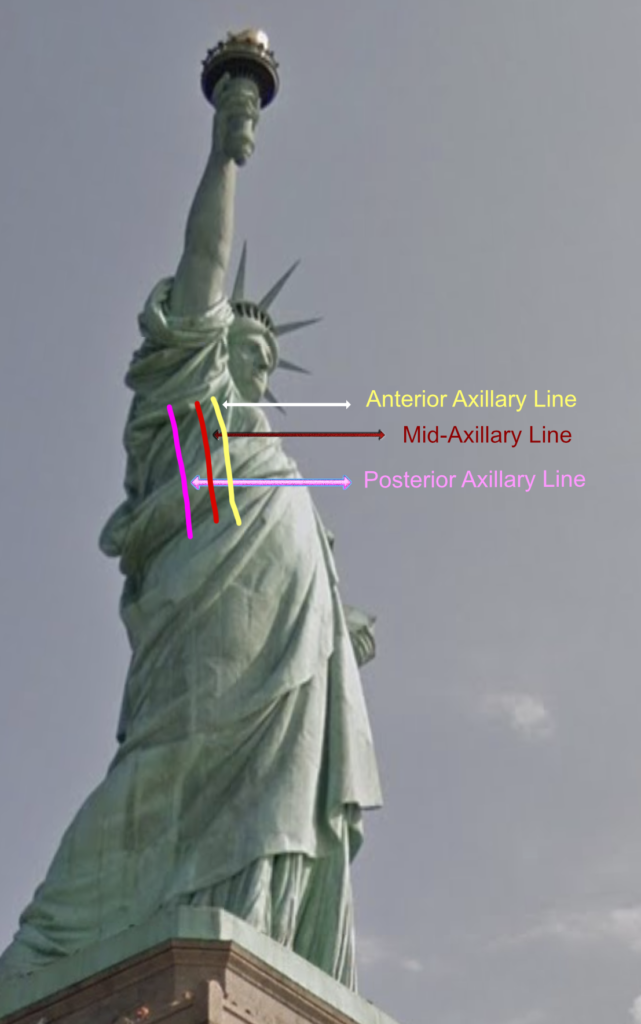An anatomical reference.
In the language of human anatomy, axillary lines are imaginary lines on the sides of the torso, use as anatomical reference points.
There are actually three axillary lines: the anterior axillary line, the mid-axillary line, and the posterior axillary line.

- The mid-axillary line is line on the coronal plane, drawn downward from the middle of the armpit along the side of the torso. It is between the anterior and posterior axillary lines.
- The anterior axillary line is drawn downward from the front of the armpit (specifically the point between the middle of the clavicle and the lateral end of the clavicle) .
- The posterior axillary line is drawn downward from the back of the armpit (the posterior axillary fold).
All three axillary lines are referred to as “coronal lines”, meaning that they are on, or related to, the coronal or “frontal” plane.
“Axial Line” is a term I use a lot in my lessons. When I do, I am usually referring to the line, between a pivotal joint and another point, that serves as an axis of rotation. Usually, this is the line between one hip and the shoulder above it. This also corresponds roughly to the mid-axillary line. The frontal (coronal) plane of the body will rotate around that axial line like a door turning on its hinges.
I will seldom, if ever, use the term “axial line” in the same sense in which it is used in anatomy. In anatomy, an “axial line” has to do with afferent nerves in the skin. An axial line in this case is the border between adjacent dermatomes that don’t have adjacent spinal levels. Dermatomes will not come up very often in my lessons.
In other anatomical terms, the word “Axial” by itself usually refers to the centre of something, like the “Axial skeleton” (head, spline, ribs, sternum, sacrum, coccyx…)
In my videos, I often refer to the “left axial line” and the “right axial line”, which is a bit confusing to people who actually know what the words mean. Axial refers to the centre of something. So, when I say left axial line, I mean “the left becomes the centre”, and when I say the “right axial line”, I mean that the right becomes the centre.
I should really start correcting that and say “left axillary line” and “right axillary line.”
You may ask, “Which axillary line do you mean? Do you mean the posterior, anterior, or middle axillary line.”
To which I say, “It depends on the situation.”
